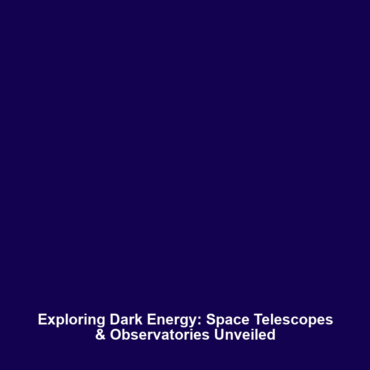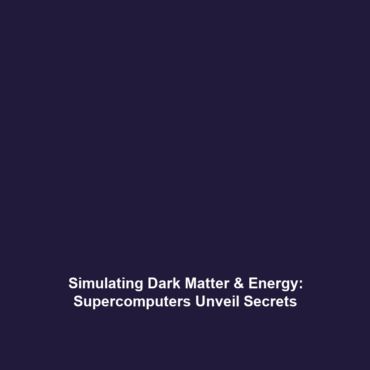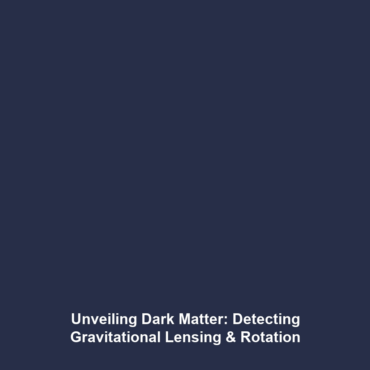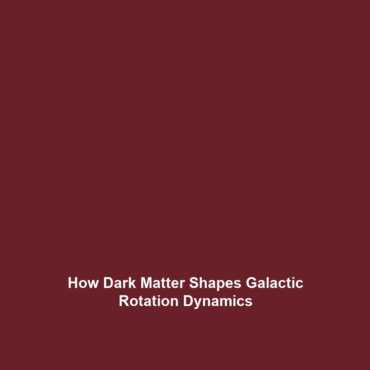Understanding Subtopics in Dark Matter & Dark Energy
Introduction
In the intriguing realm of astrophysics, exploring Subtopics within Dark Matter and Dark Energy has become a cornerstone of scientific inquiry. These elements comprise approximately 95% of the universe, yet their true nature remains one of the greatest mysteries in cosmology. This article delves into the significant aspects of Subtopics, aiming to bridge the gap between theoretical frameworks and practical applications while elucidating their importance in understanding the cosmos.
Key Concepts
Subtopic 1: Dark Matter Candidates
Several candidates for dark matter, including Weakly Interacting Massive Particles (WIMPs) and axions, have emerged in the scientific discourse. These particles are hypothesized to account for the unseen mass affecting galaxy rotation rates and structure formation.
Subtopic 2: Dark Energy Dynamics
Dark energy, believed to be responsible for the universe’s accelerated expansion, raises questions concerning the cosmological constant and its implications. Understanding how these components interplay is crucial for maze-like phenomena observed in cosmic microwave background radiation.
Subtopic 3: Gravitational Lensing
Gravitational lensing serves as a fundamental observational tool, providing insights into dark matter distribution. By studying the effect of gravitational fields on light from far-off galaxies, researchers can infer the unseen mass that affects large-scale structures.
Applications and Real-World Uses
The relevance of Subtopics extends into various practical applications, showcasing how fundamental research in Dark Matter and Dark Energy can yield transformative insights:
- Astrophysical Surveys: Using advanced telescopes, astrophysicists apply techniques developed from the study of Subtopics to map dark matter and understand universe dynamics.
- Particle Physics Experiments: Large particle colliders like CERN investigate dark matter candidates, offering concrete applications of theoretical models.
- Cosmological Simulations: Computer models mimic universe conditions, helping predict future cosmic evolution based on dark energy dynamics.
Current Challenges
Despite advancements, several challenges in studying or applying Subtopics within the Dark Matter and Dark Energy framework persist:
- Detection Limitations: Current technology struggles to detect dark matter particles directly, stymying empirical validation of theoretical models.
- Model Uncertainty: Various conflicting models exist regarding dark energy’s nature, creating confusion in the scientific community.
- Funding and Resources: Large-scale experiments require significant investment, which can be difficult to secure amidst competing scientific priorities.
Future Research and Innovations
Looking ahead, promising avenues of exploration in Subtopics are anticipated to revolutionize our understanding of Dark Matter and Dark Energy:
- Next-Gen Telescopes: Initiatives like the James Webb Space Telescope are set to provide high-resolution data, revealing new insights into cosmic phenomena.
- Quantum Computing Applications: Utilizing quantum technology could enhance simulations and analyses of dark matter interactions.
- International Collaborations: Global partnerships are essential for resource sharing and advancing experimental frameworks aimed at understanding Subtopics in depth.
Conclusion
In summary, Subtopics in Dark Matter and Dark Energy represent a pivotal area of research that promises to redefine our grasp of the cosmos. As scientists navigate challenges and leverage future technologies, the implications are profound for both theoretical development and real-world applications. For those eager to delve deeper, exploring related topics on dark matter and dark energy will enrich your understanding of these cosmic enigmas. Stay informed about the latest discoveries shaping our universe!









